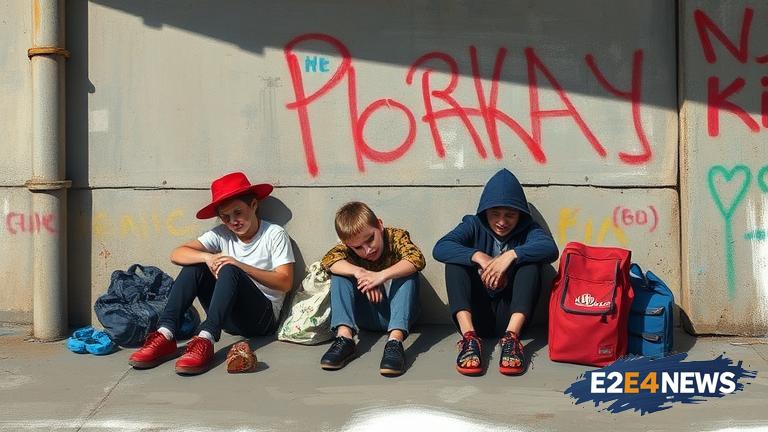The issue of homeless youth in Australia has reached a critical point, with many kids being shut out from support services that are essential for their well-being and development. According to recent reports, a significant number of children are being forced to live on the streets or in temporary accommodation, without access to basic necessities like food, clothing, and healthcare. This has led to a surge in demand for support services, but unfortunately, many organizations are struggling to cope with the influx of requests. As a result, many young people are being turned away, leaving them vulnerable and without a safety net. The situation is particularly dire for those who have experienced trauma, abuse, or neglect, as they require specialized care and support to recover and rebuild their lives. However, the lack of funding and resources has meant that many services are being stretched to the limit, leaving some kids to fall through the cracks. The consequences of this can be devastating, with many young people turning to crime, substance abuse, or other forms of self-destructive behavior as a way to cope with their circumstances. Furthermore, the absence of stable and supportive relationships can have a lasting impact on a child’s emotional and psychological development, making it more challenging for them to form healthy relationships in the future. The Australian government has been criticized for its handling of the crisis, with many arguing that more needs to be done to address the root causes of homelessness, such as poverty, lack of affordable housing, and inadequate mental health services. In response, some organizations are calling for increased funding and support for services that cater specifically to the needs of homeless youth. This includes providing access to education, job training, and employment opportunities, as well as counseling and mentorship programs. Additionally, there is a need for more emergency accommodation and support services, particularly in rural and regional areas where resources are often scarce. The community also has a role to play in addressing the issue, with many people calling for greater awareness and understanding of the challenges faced by homeless youth. By working together, it is possible to make a positive difference in the lives of these young people and provide them with the support and opportunities they need to thrive. The situation is complex and multifaceted, requiring a comprehensive and coordinated approach to address the various factors that contribute to homelessness. This includes addressing the social and economic determinants of health, such as poverty and inequality, as well as providing access to healthcare, education, and other essential services. Moreover, there is a need for more research and data on the issue, to better understand the scope and nature of the problem and to inform the development of effective solutions. Ultimately, the goal should be to provide every child with a safe and supportive environment, where they can grow and develop to their full potential. This requires a commitment to addressing the root causes of homelessness and to providing the necessary resources and support to those who need it most. The Australian government and community must work together to ensure that no child is left behind, and that every young person has access to the support and opportunities they need to succeed. The future of these young people depends on it, and it is our collective responsibility to act. The time for action is now, and we must work together to address this crisis and provide a brighter future for all. The consequences of inaction will be severe, and it is our moral obligation to act. We owe it to these young people to provide them with the support and care they need, and to ensure that they have every opportunity to thrive. By doing so, we can help to break the cycle of homelessness and poverty, and create a more just and equitable society for all. The issue of homeless youth is a complex and challenging one, but by working together, we can make a positive difference and create a brighter future for these young people.
